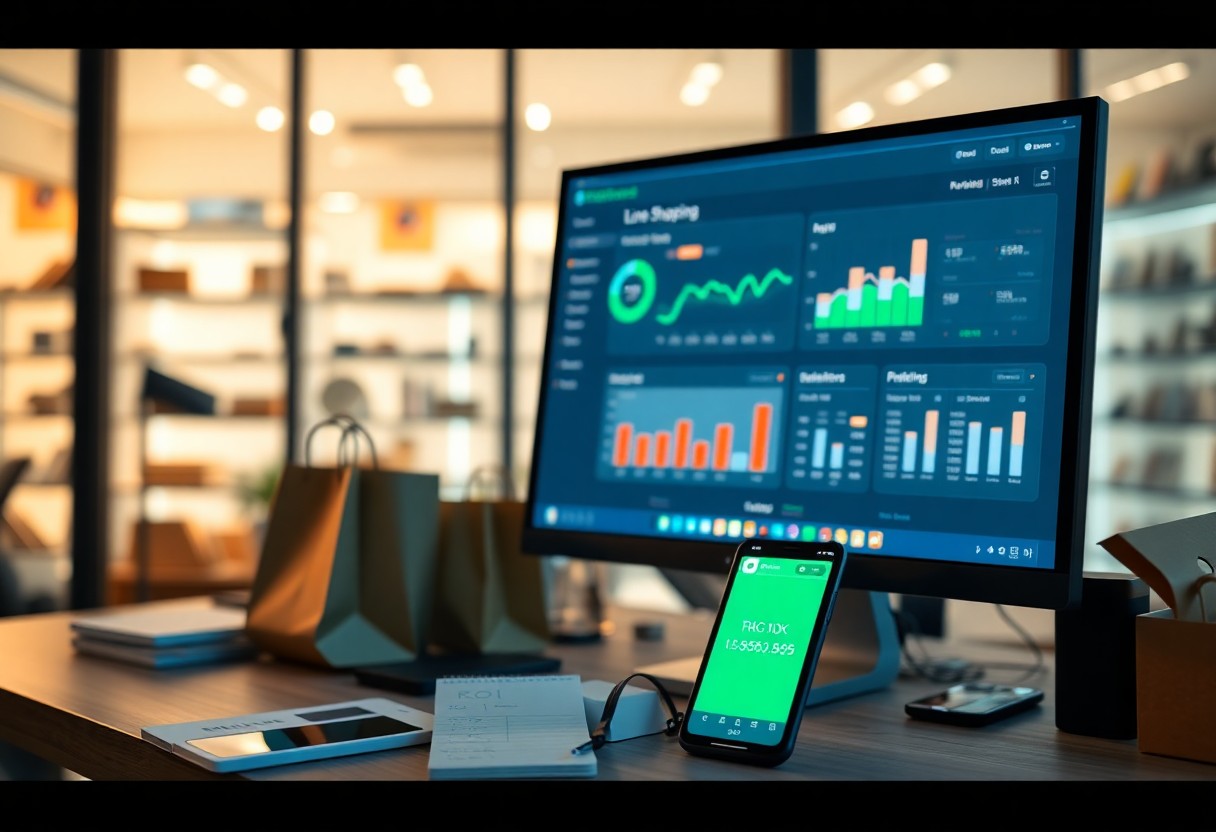You can significantly boost your ROI by leveraging line shopping, a smart strategy that allows you to compare prices and find the best deals for your products. This approach not only saves you money but also enhances your decision-making skills as you navigate the market. By understanding how to effectively use line shopping, you can make informed choices that directly impact your financial returns. Thus, this guide will provide you with imperative tips and techniques to maximize your investments and improve your profit margins.
Key Takeaways:
- Utilize price comparison tools to identify the best deals across multiple retailers, ensuring you’re maximizing your investment.
- Monitor customer reviews and ratings for products to make informed purchasing decisions that resonate with your target audience.
- Implement targeted advertising strategies that highlight discounted products or promotions to attract price-sensitive customers and boost sales.
The Profit Dynamics of Line Shopping
Line shopping intricately connects your pricing strategy with consumer behavior, ultimately influencing your ROI. Understanding how this dynamic functions enables you to pinpoint where you can lower costs while maximizing perceived value. By analyzing competitor pricing and leveraging customer insights, you can create compelling offers that resonate with your target market. The synergy between competitive pricing and strategic promotions leads directly to increased sales and stronger profit margins.
Pricing Trends: Identifying Opportunities
Monitoring pricing trends across your industry equips you to uncover valuable opportunities. Keeping an eye on fluctuations not only helps you respond effectively but also lets you spot the moments when your competitors lower their prices. By aligning your offers with these trends, you can present customers with attractive deals that encourage purchases, ultimately enhancing your bottom line.
Cart Abandonment: A Pivotal Moment for Revenue
Strategies in line shopping must address cart abandonment to recover potentially lost revenue. With cart abandonment rates averaging around 69.82% across various industries, focusing on remarketing tactics can help convert these lost opportunities into sales. Sending personalized follow-up emails or offering discounts can effectively entice customers to return and complete their transactions.
Cart abandonment isn’t just a statistic; it represents a moment of hesitation for your potential customers. Optimizing your checkout process can significantly reduce the rates of abandonment, ensuring you capture those crucial sales. Consider implementing exit-intent pop-ups that offer additional incentives or showcasing trust signals like secure payment icons to reassure buyers. These tailored approaches can drive customers back to complete their purchase, transforming an abandoned cart into a valuable transaction that boosts your ROI.
Strategies to Leverage Line Shopping
To effectively boost your ROI through line shopping, employing strategic approaches can make a significant difference. Start by timing your purchases, leverage data analytics, and explore different platforms. By fine-tuning these aspects, you’ll be able to harness the full potential of price disparities across retailers, leading to smarter purchasing decisions.
Timing Purchases for Maximum Discounts
Unlocking the best deals often relies on knowing when to buy. Awareness of seasonal sales, promotional events, and retailer-specific discount days can dramatically reduce your costs. For example, Black Friday and Cyber Monday typically offer significant markdowns on a variety of products. Plan your purchases around these peak times to capitalize on the most advantageous pricing.
Utilizing Data Analytics for Predictive Purchasing
Employing data analytics allows you to forecast price fluctuations and demand trends that can optimize your buying strategies. By analyzing historical pricing data and consumer behavior, you can pinpoint the best times to make purchases or when to wait for lower prices. This foresight helps in ensuring that your capital is utilized effectively, aligning purchases with favorable market conditions.
Insightful analytics tools can track price histories over several months, giving you the ability to see patterns and anticipate when an item is likely to go on sale. For instance, if a specific product consistently drops in price during the first week of every month, you can adjust your purchasing schedule accordingly. Some platforms even offer alerts on price drops, ensuring you never miss a deal. Leveraging these analytics not only improves your purchasing power but also enhances your overall ROI by reducing costs associated with hurried or uninformed buying decisions.
Integrating Line Shopping with Your Marketing Plan
To fully harness the power of line shopping, incorporate it seamlessly into your existing marketing strategy. This includes analyzing customer behavior and preferences to tailor your approach. Establish clear goals for line shopping, such as increasing customer engagement or boosting sales during specific promotions. Ensure that your team collaborates across departments, utilizing data-driven insights to create cohesive campaigns that resonate with your target audience while maximizing return on investment.
Targeted Promotions: Capturing Shopper Attention
Utilizing targeted promotions is a game-changer in capturing shopper attention. Tailor offers based on user data collected from previous purchases or browsing behavior to create personalized experiences. For instance, if data shows a customer frequently buys sports equipment, a special discount on a new range of athletic gear can motivate them to shop. Engaging and relevant promotions convert casual browsers into loyal customers, increasing your overall ROI.
Aligning SEO Strategies for Increased Visibility
SEO strategies are important for boosting the visibility of your line shopping channels. Implement targeted keywords related to your products and services throughout your website and promotional content. Ensure you focus on local SEO if your business caters to a regional market, as this enhances discoverability. By linking your line shopping content with popular search queries, you significantly increase organic traffic, driving more engaged users to your online store.
Optimizing your website and promotional materials with keyword-rich content helps you stay ahead in the digital space. Take advantage of tools like Google Analytics to track which keywords drive traffic to your site and adjust your strategy accordingly. Additionally, creating high-quality content that aligns with user search intent can boost your ranking on search engines, making your line shopping offerings more visible to potential customers. Regularly updating your content and staying informed about SEO trends ensures that you maintain a competitive edge in attracting and retaining shoppers.
Measuring Your ROI: Key Performance Indicators
Understanding the effectiveness of your line shopping strategy requires tracking a set of Key Performance Indicators (KPIs). Focus on metrics such as the conversion rate, which indicates how many visitors end up making a purchase, and customer acquisition cost, which shows how much you’re spending to gain new customers. Monitoring average order value and return on ad spend can reveal insights into the profitability of your campaigns. Together, these indicators help assess whether your line shopping efforts yield the desired outcomes.
Tools to Track Line Shopping Performance
Utilizing various tools can significantly enhance your ability to track and analyze line shopping performance. Platforms like Google Analytics allow you to monitor website traffic, conversion rates, and customer behavior on your site. Additionally, eCommerce tracking tools can provide insights into sales, helping you understand where line shopping fits within your overall sales strategy. Using these tools, you can gather actionable data that informs your decisions and helps optimize your campaigns.
Analyzing Customer Behavior: Insights from Your Data
Diving into customer behavior data offers valuable insights that can significantly refine your line shopping approach. By examining which products customers frequently compare and what drives their purchasing decisions, you can tailor your marketing efforts to align with their preferences. Utilizing heat maps and user flow analysis can highlight areas of your site that capture attention, allowing for data-driven improvements that ultimately enhance user experience and increase the likelihood of conversion.
For example, analyzing abandoned carts can pinpoint where your line shopping strategy may fall short. If customers consistently leave items without purchasing, it might indicate that they found better prices elsewhere or that their checkout experience was suboptimal. By addressing these gaps, such as offering targeted discounts or simplifying the checkout process, you can encourage customers to complete their purchases, thus improving your ROI through strategic adjustments informed by data.
Innovations Shaping the Future of Line Shopping
Emerging technologies and consumer behaviors are redefining the line shopping experience. As we move forward, innovations such as augmented reality (AR) and artificial intelligence (AI) are transforming how you interact with products online. These advancements create enhanced shopping experiences and streamline processes, making line shopping not only more intuitive but also more engaging for you as a consumer. Adapting to these changes can significantly enhance your ROI by attracting more customers and improving their overall shopping satisfaction.
Technological Advances Increasing Efficiency
AI algorithms now personalize shopping experiences by recommending products that align with your preferences, enhancing both convenience and satisfaction. Automation tools streamline inventory management, ensuring products are always available and pricing remains competitive, which directly impacts your purchasing decisions. Technologies like chatbots provide immediate assistance, resulting in quicker checkout processes and improved customer retention.
Consumer Trends: Shifting Expectations and Demands
The modern consumer is more informed and demanding than ever before. With access to vast amounts of information, you expect not just quality but also speed and convenience in your shopping experiences. Environmental sustainability is emerging as a key factor as well, with many consumers favoring brands that demonstrate a commitment to responsible sourcing and ethical practices. As a result, you are more likely to support companies that align with your values, driving them to innovate and adapt in the retail landscape.
This shift in consumer behavior can be observed in data collected from recent surveys, indicating that over 70% of shoppers prioritize brands that are environmentally conscious. Additionally, preferences for swift delivery options, personalized marketing, and mobile-optimized shopping experiences are reshaping retail strategies. Businesses that adapt to these evolving demands not only bolster customer loyalty but also improve their ROI, showcasing the importance of staying attuned to consumer trends.
Summing up
Summing up, utilizing line shopping can significantly enhance your ROI by allowing you to compare prices, track market trends, and optimize your purchasing decisions. By strategically analyzing competitors and leveraging data insights, you can make informed choices that maximize your profit margins. Incorporating these practices into your business strategy not only helps you stay ahead of the competition but also ensures that you are getting the best possible value for your investments. Embrace line shopping to refine your approach and see a tangible improvement in your returns.
Q: What is Line Shopping, and how can it help improve my business ROI?
A: Line Shopping is a revenue-boosting strategy that leverages social media platforms, particularly LINE, to promote products and services directly to consumers. By creating engaging content and targeted advertisements on LINE, businesses can reach a broader audience without the overhead of traditional advertising methods. This can lead to increased traffic to your website or store, higher conversion rates, and ultimately, improved return on investment (ROI). Utilizing analytics and tracking features on LINE allows businesses to refine their strategies continuously, making every campaign more effective over time.
Q: What are some effective techniques for using Line Shopping to increase conversions?
A: To enhance conversions through Line Shopping, consider implementing the following techniques: 1) Create compelling visuals and concise messaging tailored to your target audience. 2) Use promotions or limited-time offers to encourage urgency in purchasing decisions. 3) Engage directly with customers through personalized messages and recommendations, fostering a sense of connection. 4) Utilize LINE’s various features, such as stickers and games, to create an interactive shopping experience. 5) Regularly analyze customer data and feedback to adjust marketing strategies for optimal results. Implementing these techniques can significantly boost customer engagement and conversion rates.
Q: How can I track the success of my Line Shopping campaigns?
A: Tracking the success of your Line Shopping campaigns involves utilizing LINE’s analytics tools and other tracking platforms. Start by monitoring key performance indicators (KPIs) such as click-through rates, conversion rates, and customer engagement metrics. You can also set up specific goals and use UTM parameters in your links to measure traffic sources effectively. Additionally, conduct A/B testing on different content and strategies to see which yields better ROI. Regularly compiling and analyzing this data will provide insights into what works and can help refine future campaigns for even greater success.



